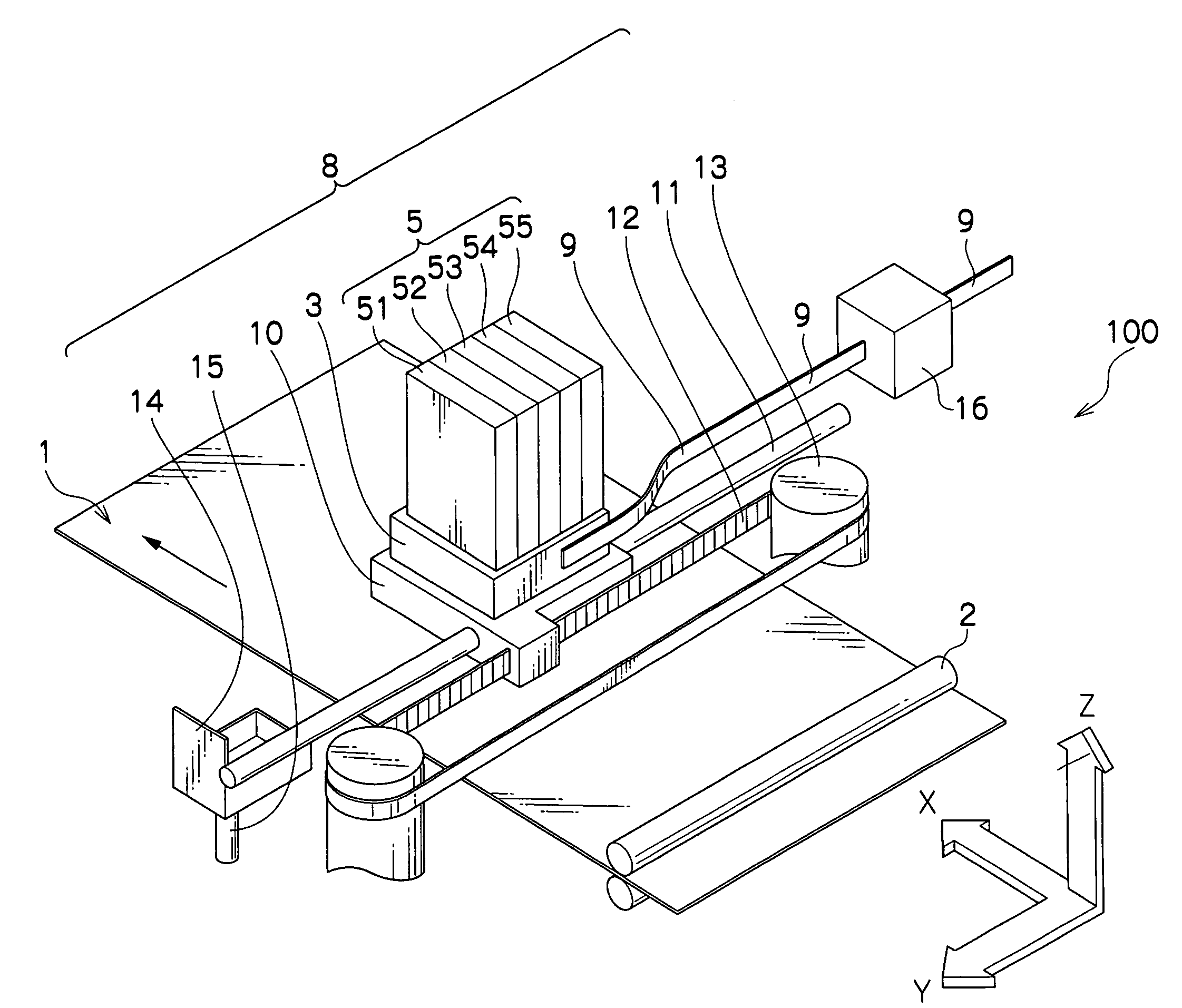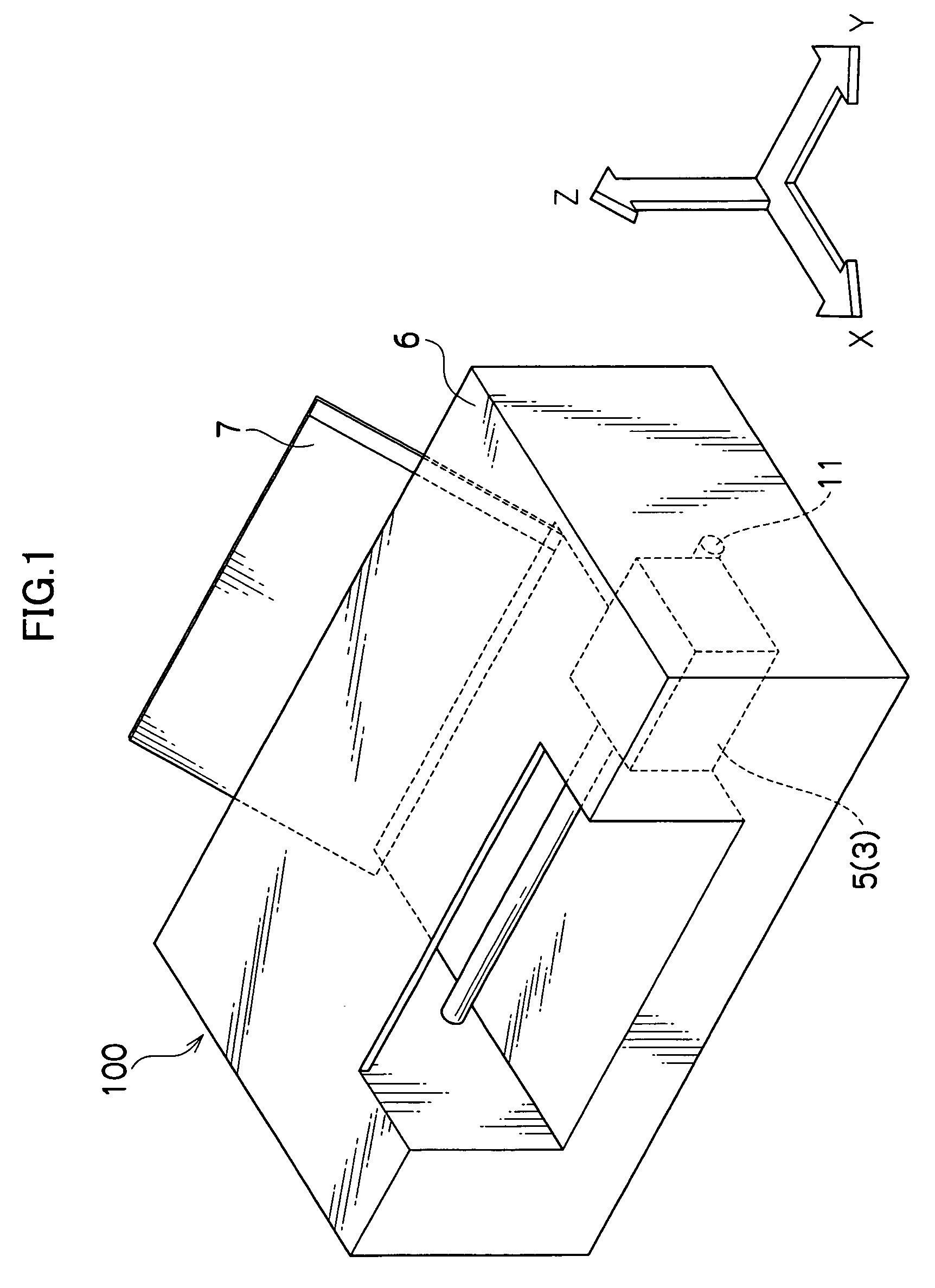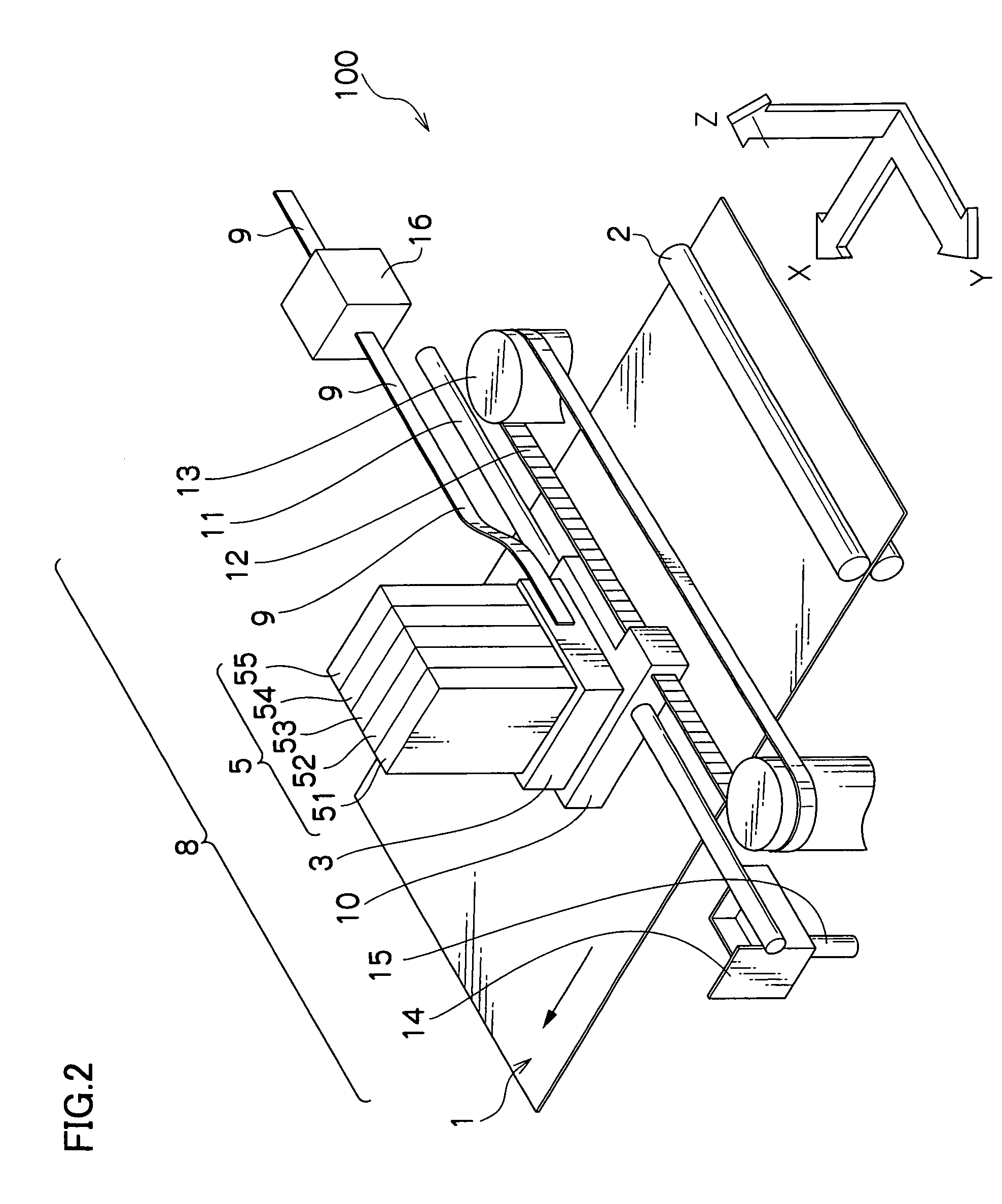Liquid composition for ink jet, ink set for ink jet, ink jet recording method and ink jet recording apparatus
a liquid composition and ink jet technology, applied in the direction of instruments, inks, measurement apparatus components, etc., can solve the problems of insufficient image density, insufficient long-term ejecting property, and insufficient long-term storage stability
- Summary
- Abstract
- Description
- Claims
- Application Information
AI Technical Summary
Benefits of technology
Problems solved by technology
Method used
Image
Examples
example
[0166]More specific description will be given to the invention by taking examples. Each of the examples does not restrict the invention.
[0167]An ultrasonic homogenizer is operated over a pigment dispersing solution put on the market. Then, a centrifugal separating treatment (8000 rpm×30 minutes) is carried out over the dispersing solution to remove a residue portion (20% of the amount of initial projection) so that a pigment dispersing solution is obtained.
[0168]10% by mass of a pigment and 1.5% by mass of a dispersing agent are added into a predetermined amount of ion-exchange water and are stirred. An ultrasonic homogenizer is operated over the mixed liquid to disperse the pigment. Furthermore, a centrifugal separating treatment (8000 rpm×30 minutes) is carried out over the dispersing solution to remove a residue portion (20% of the amount of initial projection) so that a pigment dispersing solution is obtained.
[0169]A sulfanilic acid solution is heated and 100 g of a pigment is a...
examples 1-1 to 1-5
and Comparative Examples 1-1 to 1-5
[0286]By using an ink set in accordance with Tables 1 and 2, printing is carried out. The printing is performed by a method of ejecting a second liquid (a liquid composition for ink jet) to an FX-P paper (manufactured by Fuji Xerox Co., Ltd.) and ejecting a first liquid (liquids 1 to 4 in accordance with the Tables) from thereabove by using a 800 dpi and 256-nozzle trial print head (an amount of drop of 14 ng). The printing is carried out in a general environment (a temperature of 23±0.5° C. and a humidity of 55±5% R. H), and a mass ratio of the amounts of application of the first and second liquids for forming one pixel is set to be 1:0.2. An estimation is performed for a sample left in the general environment for 24 hours after the printing based on printing patterns A to C shown in FIGS. 5 to 7 (excluding a drying time and a long-term storage stability).
>
[0287]An optical density is measured in the printing portion for each of the printing patter...
examples 2-1 to 2-5
and Comparative Examples 2-1 to 2-5
[0400]By using the ink set in accordance with the Tables 1 to 2, the printing and estimation are carried out in the same manner as in the examples 1-1 to 1-5 and the comparative examples 1-1 to 1-5.
[0401]Estimation results are concluded in Tables 7 and 8. As shown in the Tables 7 and 8, an optical density, a blur, an intercolor blur, a drying time and a long-term storage stability are excellent in the examples 2-1 to 2-5 in which an organic acid having an acid dissociation constant pKa of 4.5 or less and an organic amine compound are contained and the first liquid and the liquid composition are applied to the recording medium so as to come in contact with each other.
PUM
| Property | Measurement | Unit |
|---|---|---|
| acid dissociation constant pKa | aaaaa | aaaaa |
| mole ratio | aaaaa | aaaaa |
| mole ratio | aaaaa | aaaaa |
Abstract
Description
Claims
Application Information
 Login to View More
Login to View More - R&D
- Intellectual Property
- Life Sciences
- Materials
- Tech Scout
- Unparalleled Data Quality
- Higher Quality Content
- 60% Fewer Hallucinations
Browse by: Latest US Patents, China's latest patents, Technical Efficacy Thesaurus, Application Domain, Technology Topic, Popular Technical Reports.
© 2025 PatSnap. All rights reserved.Legal|Privacy policy|Modern Slavery Act Transparency Statement|Sitemap|About US| Contact US: help@patsnap.com



